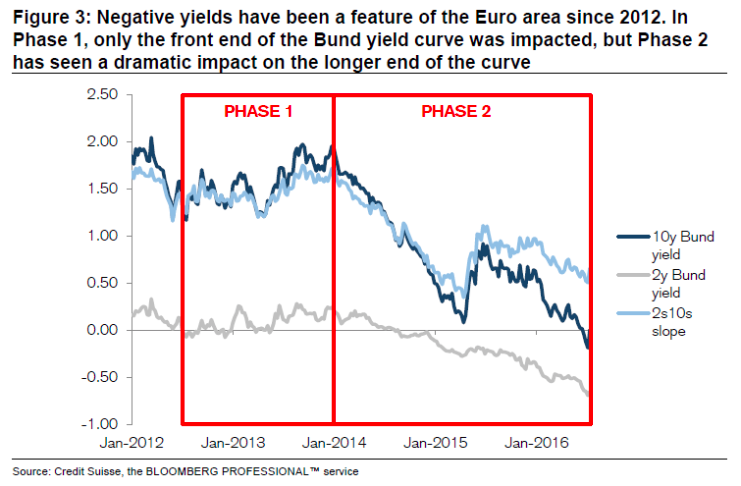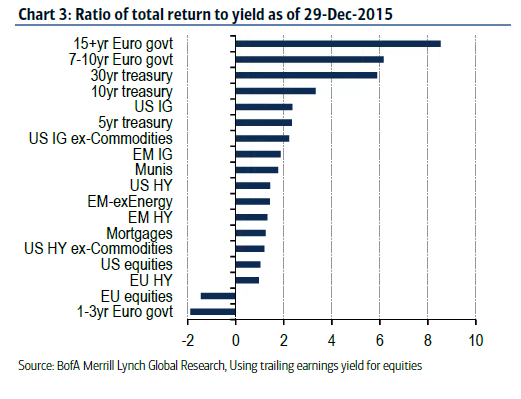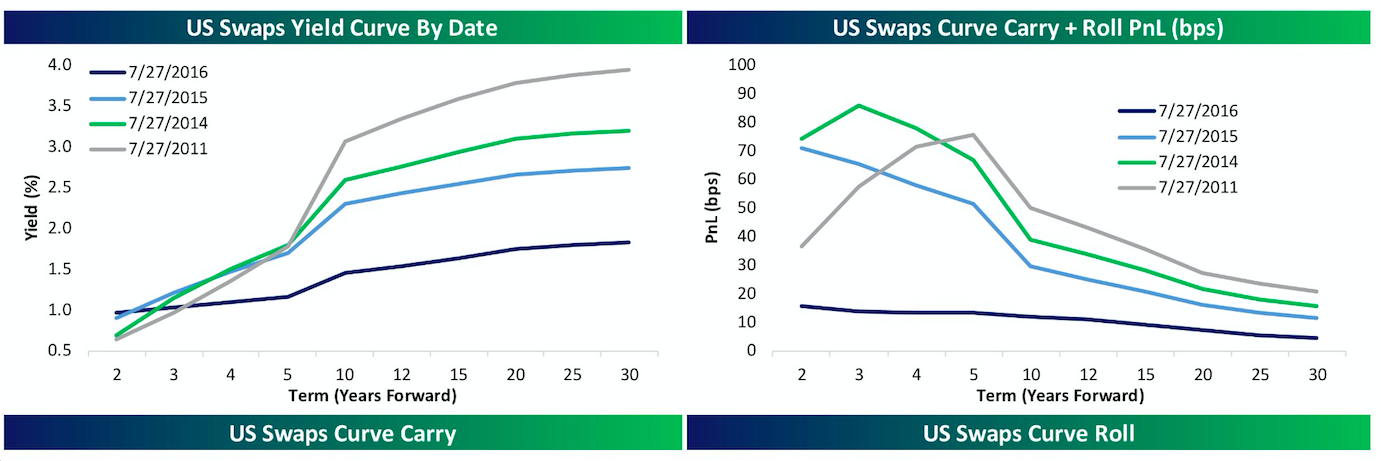How low can you go?
Fixed income investors are betting that benchmark interest rates will continue to hover around zero percent, pouring billions of dollars into longer-dated bonds and trades that stand to benefit if central banks maintain the status quo. The trend has paid off for many, so far this year, but it faces significant risks .
Below are three trends that demonstrate the extent to which investors are wagering on low rates.
1. Go long!
Longer-dated government bonds — or those with longer maturities — have generally enjoyed outsized returns in recent months, as investors pile into an asset class that's considered relatively safe but still offers higher yields compared to some shorter-dated debt.
Take Germany, for instance. Investors who bought the country's longer-term bonds have collected about nine times the returns of shorter-maturity debt this year with German securities due in 20 years-and-longer returning about 21 percent so far in 2016, according to a Bloomberg report. That compares with the 2.4 percent earned on debt due in one-to-10 years, which currently have yields below zero.
A similar dynamic has played out in Japanese government bonds and U.S. Treasuries in recent months as investors reach for the extra yield pick-up — albeit a diminishing one — still available from purchasing longer-term debt compared with shorter-term bonds. The yield on the 30-year U.S. Treasury is 2.2 percent, for example, compared with 1.53 percent on the benchmark 10-year note.
"Implicitly, yields are a hold-to-maturity concept, and actual returns can, for certain periods, deviate quite far from that implied by yields as we have seen in recent years," Credit Suisse AG led by Will Porter and Chiraag Somaia wrote last week.Still, the flood of money into longer-dated securities raises the question of whether investors are being forced into the securities, or willingly snapping them up in anticipation of years of ultra-low interest rates and central-bank support for bond prices.
It also strikes at the heart of one of the most important concepts in bond markets — duration.

2. Duration, duration, duration
Buying longer-dated bonds has proved to be a popular strategy for investors seeking higher returns in an era of low and even negative interest rates. It can also backfire, however, given that such debt is extremely sensitive to changes in interest rates and yields. When interest rates go up, the price of bonds with a greater duration will generally fall much more than that of their shorter-dated counterparts.
So-called duration risk has has been on the rise in an environment of low interest rates and a paucity of yield. Faced with a decision between investing in securities that will see investors wait for longer to get their money back but come with modestly higher yields, or putting their money in higher-yielding assets that might not be paid back at all, investors have repeatedly opted for duration risk over credit risk.
"Given a choice between extending duration and going down the risk spectrum to avoid negative yields, investors have overwhelmingly chosen the former," Bank of America Merrill Lynch strategists led by Rachna Ramachandran wrote in research published earlier this week. That means investors may have insulated themselves from credit risk, but could prove much more affected by interest-rate moves.

3. Less Roll, more Rock
Meanwhile, the amount of money to be generated from investing in certain interest-rate and bond positions has deteriorated precipitously as the flood of money into long-dated bonds flattens the yield curve. Profits available from "carry and roll" have fallen as the difference between short- and longer-dated bond yields narrows across the developed world. The deterioration means that while investors could previously make profits simply by buying and holding long interest-rate positions, investors now need to see lower rates to make money.
"The flattening of the U.S. yield curve has not only fueled huge gains in long-term bonds but has also removed a huge amount of 'meat on the bone' for interest rate longs elsewhere on the curve," George Pearkes, fixed income analyst at Bespoke Investment Group, wrote in a note published today.

"With the curve's current flat shape, there is very little incentive to hold long interest-rate positions in order to accrue income; that’s not merely true in terms of low yields to maturity, but also in terms of shorter-term one-year trades at various points on the curve," he said. "In our view, this is a strong signal that bond markets are increasingly becoming a destination for either speculative (bets on higher prices, lower rates) or price-insensitive (buyers at any price) flows. While that isn’t a 'bubble,' the behavior shares some attributes with that phenomenon."
In other words, it's bond market or bust.